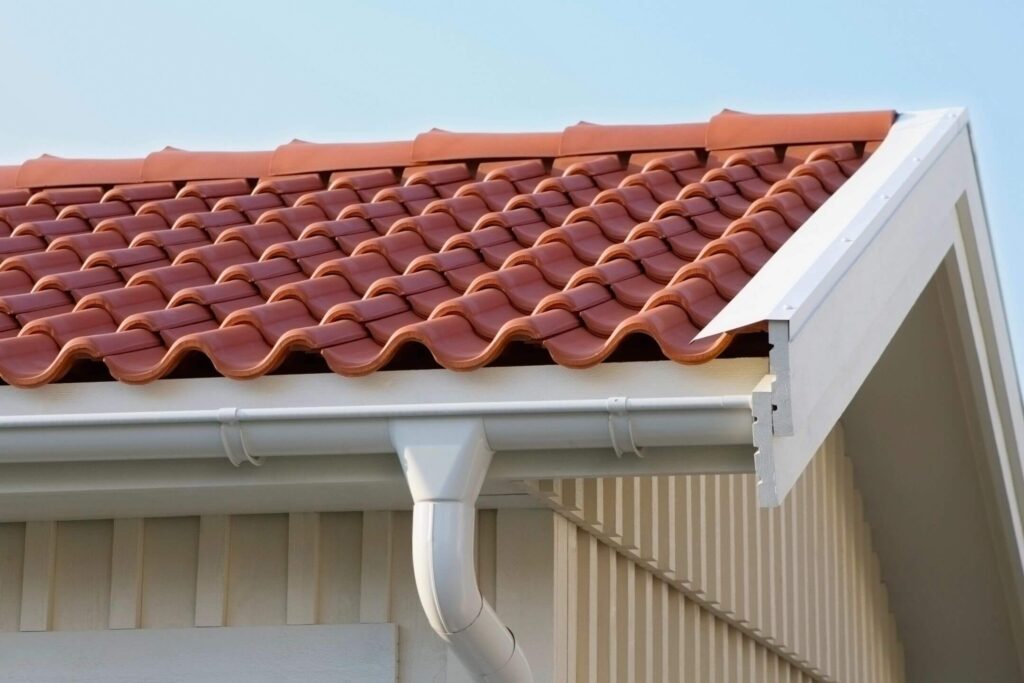
Rain gutters redirect and carry rainwater away from your home to prevent soil erosion, foundation damage, rot, basement leaks, and other costly problems. You can easily install gutters yourself with the help of a partner, tools, and a ladder.
Begin by determining where to put the gutters. Measure the roofline, taking into account architectural features and entrance areas.
The Front of the House
Gutters serve the important function of collecting and directing rainwater away from a house’s foundation. This is particularly crucial in areas that experience heavy rainfall and stormy weather.
Homeowners often ask if they need gutters around the house, but the answer is almost always yes. Without gutters, water that falls off the roof can splash down the sides of the house and damage the trim and siding. It can also erode the soil around the foundation and leak into the basement. Gutters and downspouts can prevent this soil erosion, protect the house’s foundation and retaining walls, and help keep the basement dry.
To install a gutter system, start by accessing the fascia, which is the flat board attached to the edge of the roof. Use a tape measure and a level to mark the desired slope on the fascia with chalk. Then, use a pair of heavy-duty wire snips to cut the gutter to size. Screw the gutter’s fascia brackets into the rafter tails at each chalk mark.
Next, consider entrance areas, such as porches or steps. Ensure that the gutters and downspouts are properly fitted to avoid leaking or spilling water onto these features, which can create safety hazards for guests. Also take into account any landscaping or driveways in the front of the house and ensure that the gutters and downspouts can effectively divert the water away from these features to prevent erosion and damage.
The Back of the House
When gutters are properly positioned on a house, they help collect and divert rainwater away from the foundation and other structural components. When the system is well-maintained, gutters can protect a home from moisture damage and extend its lifespan by minimizing direct water contact.
Gutter placement is critical for managing roof runoff and protecting outdoor living spaces and landscaping. For example, excessive water exposure to a house’s siding can lead to warping and peeling paint, while constant water contact with landscaping can cause soil erosion that compromises the foundation of the house. Gutter systems help protect these areas from deterioration and minimize damage by directing water into open-topped gutters that attach to the house’s fascia and close into closed pipes called downspouts.
To determine the correct size gutter for a house, consult with a gutter supplier or roof contractor to find out what dimensions are recommended for your specific roof type and location. If you want to get a feel for how gutters will look on your house before they are installed, grab an old cardboard cereal box and tape together its shape. Then, take the mock-up roof outside and pour a cup of water over it to observe where the water drains. A good rule of thumb is that a gutter should have a slope decline of 1/8-inch to 1/2-inch vertical per 10 feet horizontal, which you can easily measure using a tape measure and a level.
The Sides of the House
If your house has eaves or overhangs, make sure you have gutters installed properly. The function of gutters is to catch rainwater and direct it toward a downspout and away from the house foundation. If you don’t have gutters, rainwater can wash against the foundation and walls of your home, which can cause rot, mold, and structural damage.
Installing gutters on the sides of your home can also help protect landscaping and driveways from water runoff. If you have flower beds, shrubs, or other plant material near the gutter, consider installing splash blocks or extenders to avoid excessive contact with the soil.
Another important thing to consider when deciding where to put gutters on your house is the climate you live in. If you live in an area that doesn’t get much rain, a simple roof pitch may be enough to shed the rainfall without needing gutters. However, if you live in an area with frequent rainy weather, a more extensive gutter system is typically needed to protect your home and its foundation.
The Roofline
Gutters and downspouts help to collect and divert rainwater away from the foundation of the house, preventing soil erosion, siding damage, basement flooding, and other structural issues. Strategic gutter placement along the front, back, and sides of the house allows for effective collection and drainage of rainwater, protecting outdoor living spaces, entrance areas, and other high-traffic zones.
Considering factors like climate, roof slope, and house size helps to determine where on the house to put gutters. Steeper roofs, for example, may require larger gutters to accommodate the higher volume of water runoff. Additionally, the surrounding landscape and vegetation should also be taken into consideration to ensure that gutters are placed properly to avoid clogging or blocking the flow of water.
Before installing gutters, it is recommended to create a mock-up of the home’s exterior with cardboard or scrap material, a ladder, and some tape. Start by positioning the gutters at their intended locations and marking the level of the fascia board with a chalk line (be sure to account for 1 inch of fall for every 20 feet of run). Then, locate rafter tails behind the fascia and mark their location with a pencil. Bore a lag screw into the fascia board at each mark, spacing them as per the manufacturer’s recommendations.
Before drilling into the wood, be sure to apply some soap to the screw head to make it easier to penetrate the fascia. Once all of the screws are installed, apply a coat of waterproof sealant to protect your gutters from moisture and UV rays.






























